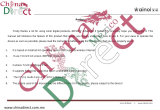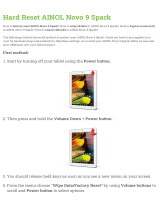
i
Contents
Chapter 1. Getting to know your computer..................................................................................... 1
Top view
......................................................................................................................................................... 1
Left-side view
................................................................................................................................................. 5
Right-side view
.............................................................................................................................................. 8
Front view
..................................................................................................................................................... 10
Bottom view
................................................................................................................................................. 11
Chapter 2. Starting to use Windows 8.1 ........................................................................................ 12
Configuring the operating system for the first time
.............................................................................. 12
Operating system interfaces
...................................................................................................................... 12
The charms
................................................................................................................................................... 13
Putting the computer to sleep or shutting it down
................................................................................ 15
Connecting to a wireless network
............................................................................................................. 17
Help and support
........................................................................................................................................ 18
Chapter 3. Lenovo OneKey Recovery System.............................................................................. 19
Chapter 4. Troubleshooting............................................................................................................ 20
Frequently asked questions
....................................................................................................................... 20
Troubleshooting
........................................................................................................................................... 22
Trademarks ...................................................................................................................................... 26






















